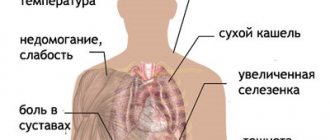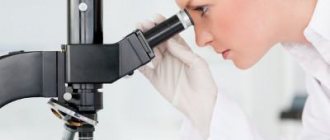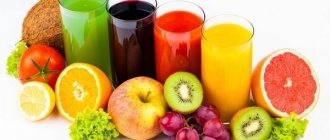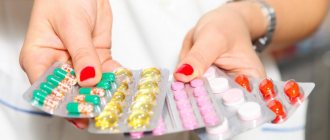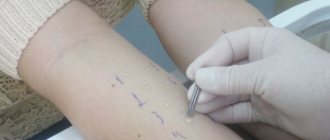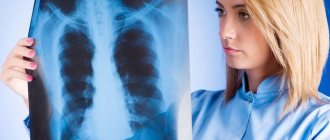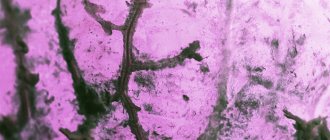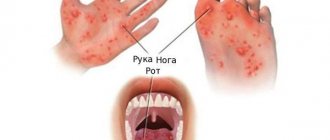Hay fever, definition
Hay fever is an allergic disease, the clinical symptoms of which - rhinitis and conjunctivitis - appear only during certain plant flowering seasons. When pollen penetrates the body, the process of producing specific antibodies is activated, which, together with antigens, create immune complexes. These complexes, attaching to receptors on the cytoplasmic membrane of tissue basophils (mast cells), destabilize them, which causes the activation and release of histamine, serotonin and other inflammatory mediators from the cells.
Mediators enhance the secretion of exudate, increase the porosity of capillaries, and cause contraction of smooth muscle fibers of the bronchi, which is clinically manifested by: lacrimation, sneezing, secretion of watery nasal discharge, bronchospasm.
How can OXY 3 help an allergy sufferer?
By installing this device, you can always keep your windows closed, thereby blocking the main route for pollen to enter your home. The air flow will be through an insulated through channel in the wall. The air flow will pass through the built-in filter of the device, cleaning it from pollen, dust, soot and other contaminants. This filter (pink color) is a reliable barrier to allergens - it is able to retain even the smallest types of pollen (from 20 microns).
This protection technology solves the key problem of hay fever. As we remember, an allergic reaction is provoked by an “overdose” of an allergen in the body. The scheme here is simple: since we spend most of our time within the walls of our home, allergy sufferers receive the main “dose” of the allergen not on the street, but in their apartment, breathing air filled with pollen from flowering plants.
If you install supply ventilation with a reliable filter and keep the windows closed, the access of pollen to the apartment will be stopped. The concentration of allergens in the body will gradually decrease, as will the severity of symptoms. Over time, it will drop to a level at which the allergic reaction is minimal or disappears altogether. This will significantly improve the quality of life - you will be able to walk outside more without fear of exacerbations, and without depriving your children of walks.
So, OXY provides fresh, clean air in the apartment with the windows closed. The air exchange rate can be adjusted. With this device, there is no need for window ventilation - you can forget about street noise, tobacco smoke from neighbors, foreign odors and drafts. During the cold season, the supplied air will be heated by a built-in heater.
To achieve complete protection from contact with allergens, it remains to take care of additional cleaning of the “internal” air of the apartment. This can be done with the help of air washers - devices that “drive” air through themselves and, with the help of moisture, deposit particles of contaminants: dust, pollen, fluff, wool and others.
The cost of such sinks is usually low (on average 5000-8000 rubles). In combination with forced ventilation, they can make your home a space completely isolated from allergens.
Buying a breather versus spending on doctors: calculating costs over 3 years
A thing like a calculator can help in making a decision. The most budget model of supply ventilation costs 18,000 – 20,000 rubles. It requires annual filter replacement (on average from 900 to 2000 rubles). That is, for a total of 3 years, the purchase and maintenance of ventilation will cost 24,000 rubles.
Now let’s calculate the costs of consultations with doctors and the costs of medications. Even if we take the minimum, it’s 15,000 rubles per season or 45,000 rubles for the same 3 years. The difference of 21,000 is quite noticeable. Here you also need to take into account that in the first case the purchase is a one-time purchase, but medications need to be purchased every year, without any prospects for changing the situation.
But even the financial side of the matter is not the most important thing here. There are more important things - freedom from the fear of allergies. Stopping being afraid of the arrival of spring and enjoying the bright sun and greenery around is invaluable.
Symptoms of hay fever
Symptoms of hay fever are strictly seasonal. The severity of the course and severity of symptoms of hay fever are directly determined by the intensity of plant flowering and weather conditions. In dry weather with wind, the saturation of air with pollen increases, and the symptoms of the disease also increase. When it is humid, the density of pollen particles in the air is minimal, and the patient’s condition improves.
Characteristic clinical symptoms are caused by synchronous damage to the mucous membranes of the nasal cavity and organs of vision. Eye symptoms:
- Feeling of “sand”, the presence of foreign particles in the eyes.
- Itching, burning in the area of the eyeballs.
- Constant lacrimation.
- Photophobia.
- Periorbital edema.
- Hyperemia of the conjunctival membrane.
- Dilated capillaries of the sclera.
- Narrowing of the palpebral fissure.
- Swelling of the eyelids.
Respiratory tract symptoms:
- Severe itching in the nasopharynx.
- Impaired nasal breathing.
- Paroxysmal sneezing.
Nasal discharge is copious and mucous.
If allergic inflammation affects the paranasal sinuses, sinusitis is formed.
Sometimes contact allergic dermatitis, urticaria, pathologies of the genitourinary tract (cystitis, vulvovaginitis), nervous system (arachnoencephalitis) are added. With a high degree of sensitization of the body, the development of pollen intoxication is possible, which is clinically manifested by weakness, fatigue, increased sweating, tachycardia. fever, headaches, insomnia or daytime sleepiness.
The most dangerous manifestation of hay fever is bronchospastic syndrome (pollen bronchial asthma) in the form of a dry paroxysmal cough, with episodes of suffocation and shortness of breath. Bronchial asthma as the only clinical manifestation of hay fever occurs in 11% of cases. In winter, no exacerbations are observed. With the end of the dusting season, the signs of rhino-conjunctivitis gradually end.
Why should allergic rhinitis be treated?
- The development of hay fever can lead to purulent inflammation in the sinuses. This occurs as a result of swelling and impaired drainage of the sinuses. Against the background of allergies, purulent rhinosinusitis, sinusitis, frontal sinusitis, ethmoiditis and other ENT diseases can develop.
- Since during hay fever the nose is often stuffy, the patient often begins to use vasoconstrictor drugs to restore normal nasal breathing. This leads to addiction and naphthyzine dependence is formed.
- Due to swelling of the auditory tubes, an acute form of otitis media or exudative otitis may develop.
- If you do not see a doctor for treatment of allergic rhinitis, it will recur from year to year, and its symptoms will increase and worsen, risking developing into a chronic form.
Causes of hay fever
The cause of hay fever is an immediate allergic reaction as a response of the immune system to the penetration of pollen from flowering plants into the body, which was previously sensitized with a certain antigen. Research in the field of molecular allergology has shown that the source of allergic reactions in hay fever is not only pollen, but also other parts of plants (leaves, seeds, fruits, stems). This serves as the basis for the occurrence of cross food allergies and intolerance to plant-based medications in patients.
Factors provoking hay fever
Hereditary predisposition: a person’s allergies manifest themselves in 50% of cases if both parents have symptoms of any allergic pathologies; if one is sick - 25%.
- Antenatal pathologies: prematurity, low birth weight babies.
- Lack of breastfeeding.
- Place of residence: urban residents suffer from hay fever 4–6 times more often than rural residents.
- Time of birth – children born during the dusting season have a greater risk of developing hay fever.
- Frequent ARVI.
- Smoking.
- Poor nutrition, presence of allergens in food.
- Geographical factors - the existence in the region of plants that spray allergic pollen.
- Atmospheric air pollution from industrial waste and vehicle exhaust gases.
Diagnosis of hay fever
Diagnosis of hay fever takes place in 2 stages.
- The first stage of the examination is performed by a general practitioner or family doctor
- A detailed study of the disease history (seasonal manifestations of the disease in spring and summer).
- Identification of family heredity for various types of allergic pathologies.
- Conducting a physical examination (rhinoscopy and ophthalmoscopy, x-ray of the sinuses).
- Laboratory tests of blood, nasal secretions, and sputum, in which, in case of hay fever, a large number of eosinophils are detected.
The second stage of the examination is carried out by an allergist.
- Skin tests with pollen allergens are performed outside the exacerbation season. The method consists of intradermal injection of suspected purified allergens. The result is assessed after 20 minutes - if hyperemia or swelling of the skin occurs at the injection site, the test is considered positive.
- Provocative biotests are used when skin tests are insufficiently clear. When performing the study, allergic reactions of varying severity occur, so they are performed exclusively in specialized hospitals, where doctors are familiar with emergency care techniques for the development of conditions that are dangerous to the health and life of the patient (Quincke's edema, anaphylactic shock), and also so that the patient is under 24-hour medical supervision. A diagnostic sample (a component of pollen) is administered into the nose, into the eyes, or in the form of inhalation. The appearance of an allergic reaction to a certain type of pollen is evidence of a precisely identified etiological antigen that provokes hay fever. Determination of specific reagins in the blood - Ig E
Examination of a patient with allergies - accessible and inexpensive
- To identify allergens that cause an atypical reaction in the body, doctors conduct a kind of detective investigation, asking the patient certain questions - from diet to the characteristics of his environment.
- In addition, allergy tests are carried out—scarification tests, injection tests, or subcutaneous tests—and blood tests for allergens are taken to identify certain classes of substances that cause hay fever.
- Sometimes it is necessary to perform a challenge inhalation test or a radioallergen sorbent test, RAST, aimed at measuring the amount of IgE antibodies in the bloodstream (immunoglobulin E) to a specific allergen.
Seasonal hay fever
Hay fever is called seasonal allergy, since the disease is closely related to the flowering season of plants that disperse allergenic pollen. There are 3 known categories of plants whose pollen has allergenic properties:
- wind-pollinated trees;
- cereals;
- weeds.
- Each type of plant has its own season of activity:
- Spring: from April to the end of May, flowering of wind-pollinated trees.
- Summer: from June to mid-July, pollen spread by cereal crops.
- Summer-autumn: end of July – September, weed flowering season.
- Pollen is released by flowering plants in the morning, but the maximum concentration is determined in the afternoon or evening. Fine pollen can be scattered for many kilometers around, and its allergenic properties persist for several hours. After rain, the air is practically free of pollen allergens.
Treatment of hay fever
Treatment of hay fever is determined by the phase of the disease: season of exacerbation or inter-relapse period.
Therapy during the exacerbation season
Elimination of etiological allergens.
- Antihistamines of the 2nd or 3rd generation. Histamine is recognized as the leading pathogenetic link involved in the development of hay fever.
- Antihistamines only work in the early stages of an allergic reaction (sneezing, watery eyes, mucus from the nose). Later, when other mediators (prostaglandins, leukotrienes) are added, when swelling of the mucous membranes of the nasal cavity and nasal congestion occurs, vasoconstrictors are prescribed.
- Cromoglynic acid derivatives (cromoglycates) are mast cell stabilizers. They act on the outer membrane of basophils and prevent the release of mediators from them.
Topical glucocorticoids have high anti-inflammatory effectiveness and reduce nasal and bronchial secretions.
Systemic steroids are rarely prescribed for a short course, as they have numerous negative side effects on the body. Symptomatic remedies: vasoconstrictor nasal drops (decongents) cause a narrowing of blood vessels, remove swelling of the mucous membranes, improve nasal breathing, relieve nasal congestion, but long-term use (more than 7 days) can provoke the appearance of drug-induced rhinitis. A stepwise approach is used in treating the disease:
Stage 1, mild course: use antihistamines, cromoglycate. Stage 2, intermediate course, topical (local) glucocorticoids are used. Stage 3, severe course - local glucocorticoids, antihistamines.
Inter-relapse period
- Elimination of risk factors: treatment of foci of chronic infection (carious teeth, pharyngitis, tonsillitis), getting rid of helminths and protozoa, treatment of concomitant diseases.
- Allergen-specific immunotherapy (ASIT) in various ways: oral, subcutaneous, aerosol, combined. The method allows to reduce the sensitivity of tissues to a specific antigen. This effect is achieved by introducing into the patient’s body specially selected minimum doses of the allergen with a slow gradual increase. ASIT reduces the symptoms of allergic inflammation by reducing tissue sensitivity to the allergen and mediators.
- ASIT is the only method of therapy that allows you to achieve long-term remission, delay further progression of the disease and prevent complications.
- Nonspecific immunotherapy.
In what order is the disease treated?
If you suspect you have a pollen allergy, we recommend that you see our allergist-immunologist. The doctor will help determine an accurate diagnosis, relieve painful symptoms and cure allergies completely.
An approximate scheme for diagnosing and treating hay fever in our clinic looks like this:
- Consultation and examination. The doctor will ask questions to get a complete picture of the disease. Be prepared to tell him during what period your symptoms worsen and what specific manifestations of allergies bother you.
- Analyzes and tests for allergens. They will allow you to find out whether you really have hay fever and what kind of pollen your body reacts to. We do skin tests and blood tests.
- Relieving symptoms. Based on the test results, the doctor will prescribe medications to alleviate the symptoms of hay fever during the main treatment.
- Treatment: ASIT (allergen-specific immunotherapy). It is prescribed only to patients with severe clinical manifestations and takes place in several stages.
Medicines for hay fever
- Antihistamines I
generations: Suprastin, Tavegil, Fenkarol act quickly, but do not last long, so they are prescribed several times a day. Because of their ability to penetrate the blood-brain barrier and have a restraining effect on the functioning of the central nervous system (drowsiness, lethargy), they are not used in people whose occupation requires a quick reaction.
- Antihistamines II
generations: Cetrin, Cetirizine, Erius act within 24 hours, do not depress the nervous system and can be used for a long time without developing negative side effects.
- Antihistamines of the second generation and cromoglycates begin to be taken 2 weeks before the expected start of flowering and continue to be taken until the end of the season.
- Cromoglycates are available in eye drops, nasal sprays, and inhalation aerosols: Intal, Cromohexal, Lecrolin.
- Vasoconstrictor nasal drops: Sanorin, Naphthyzin, Otrivin.
- Systemic glucocorticoids (tablets, intramuscular injections) are used for severe disease with episodes of bronchospasm and suffocation.
Vasomotor allergic rhinitis
Vasomotor rhinitis is associated with a disorder of neuro-reflex mechanisms in the human body. Tobacco smoke, stress, alcohol, cold, hormonal imbalance, and certain foods act as provocateurs of vasomotor rhinitis.
Differences between vasomotor and allergic rhinitis:
- appears only in adulthood;
- does not have a seasonal manifestation;
- often appears not due to exposure to allergens on the mucous membrane, but as a result of abuse of vasoconstrictor drops or trauma to the nose.
Recommendations for hay fever
Recommendations for hay fever during the flowering season include the following:
- Termination of the patient’s contact with the causative allergen is a trip to another climate zone, for example, to the sea, while the plant is “dusting.”
- Avoid walks in the park, forest, field, where the air is highly saturated with pollen.
- Keep windows closed during the flowering period of plants that cause hay fever attacks.
- It is permissible to ventilate the room in rainy, windless weather.
- The air humidity in the room where the patient is located should be maintained at 50–60%.
- Equip the apartment with a filtration and air purification system.
- When returning from the street, you must wash yourself thoroughly, rinse your nose and eyes.
- Wet cleaning every day.
- Follow a hypoallergenic diet with the removal of some plant foods from the diet, as cross-allergy is possible.
- During the flowering season of plants to which the patient is allergic, he cannot undergo planned operations and preventive vaccinations.
Question answer
Is it possible to walk with hay fever?
It is necessary for patients with hay fever to limit their stay in the fresh air (park, forest, field) at a strictly defined time - during the period of pollen dispersal by wind-pollinated plants. In other seasons there are no contraindications for walking.
Is it possible to get vaccinated for hay fever?
Preventive vaccinations are contraindicated during the season of exacerbation of hay fever - when the plant is flowering (dusting), which causes allergic reactions. Vaccination can be carried out during the interictal period, usually in late autumn or winter, after permission from an allergist.
Can you get a pet if you have hay fever?
In allergic pathologies, including hay fever, hypersensitivity often develops not to one type, but to many allergens - polyvalent allergy. Allergists do not advise having pets if you have hay fever, since the possibility of developing a cross-reaction cannot be ruled out.
Can there be a fever with hay fever?
With hay fever, the concentration of inflammatory mediators histamine and serotonin in the blood increases, which causes the development of “pollen” intoxication, which can increase body temperature to subfebrile levels of 37.5–38 degrees
Is it possible to eat citrus fruits with hay fever?
No you can not. Many products of plant origin (nuts, citrus fruits, peaches, cherries) have common antigens with pollen from plants that cause hay fever symptoms. Therefore, consuming citrus fruits even outside the flowering season can cause an exacerbation of the disease.
Complications
If no measures are taken, hay fever progresses, adding new symptoms in adults. May develop:
- sinusitis,
- laryngitis,
- Quincke's edema;
- bronchial asthma;
- atopic dermatitis.
The patient experiences weakness, loses working capacity, becomes drowsy, and irritable. When consuming foods containing an allergen, gastritis often develops, then enteritis. Abdominal pain can be combined with skin rashes such as hives and itching of the anus.
Quincke's edema requires emergency medical attention. At the first sign, you need to call an ambulance.
